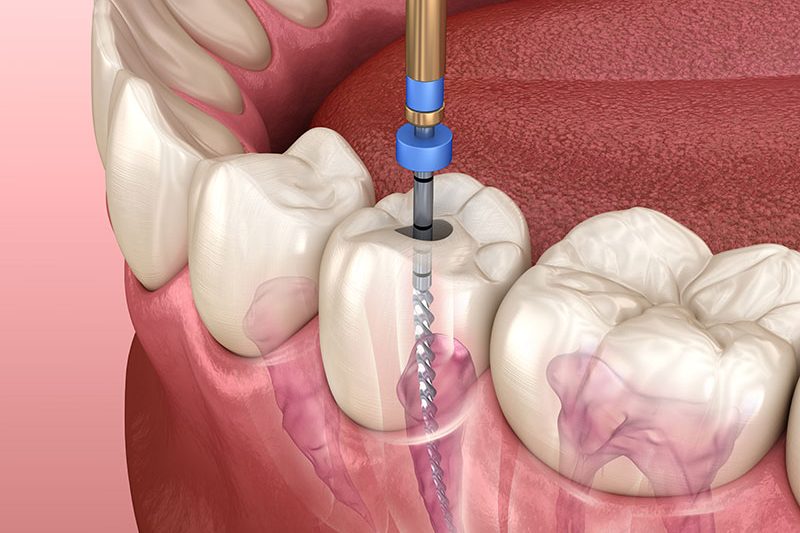A non-restorable tooth does not need to be extracted with the emergence of endodontic treatment nowadays. It is a painless treatment which saves your teeth and restores your chewing function.
There was once a Malay lady who came into the clinic together with her five year old girl. The lady looked weary and anxious as if she had not been sleeping for days. The little girl had her right cheek red and swollen. After a close inspection, i found out that she had several grossly decayed molars, even the pulp was deeply infected. I decided to carry out the root canal treatment, and to my great relief, she had all her molars saved after several treatments.
Endodontic treatment is a dental procedure which does not bring any side effects at all. It simply saves the teeth, restoring the basic chewing function not only for children, but everyone.
Painless Endodontic treatment
There are two types of endodontic treatments:
1. PULPOTOMY
This treatment is best to be carried out only when the pulp in the crown portion is damaged. The patient will be administered with local anesthetics before the dentist drills off the decayed crown. Drilling will continue until the dentist reaches the pulp chamber. After nerve tissues inside the chamber has been cleaned up, it will be filled up with medicated dental materials. This is a painless treatment where a person will not experience pain at all during and after the whole treatment.
2. ROOT CANAL TREATMENT
To save a tooth with dead nerve tissues and inflamation to the bottom of the root, there are no other methods better than the root canal treatment. This is trickier than the pulpotomy and takes a longer time to accomplish. When nerve tissues are dead, the pulp will produce putrid smell and pus. The gums will be seen reddened and swollen. During treatment, the dentist will eliminate damaged tissues in the pulp. The baby tooth anatomically has many tiny and branched canals. Therefore, it requires much skill to completely clean up all canals before filling them up with medicated materials.
It is highly possible that the rot canal treatment can be successfully done in most circumstances, however, one should never leave a decayed tooth until the bacteria has spread throughout the whole tooth. Again, prevention is better than cure. Regular dental check-ups can prevent a tooth from being extracted or treated.





